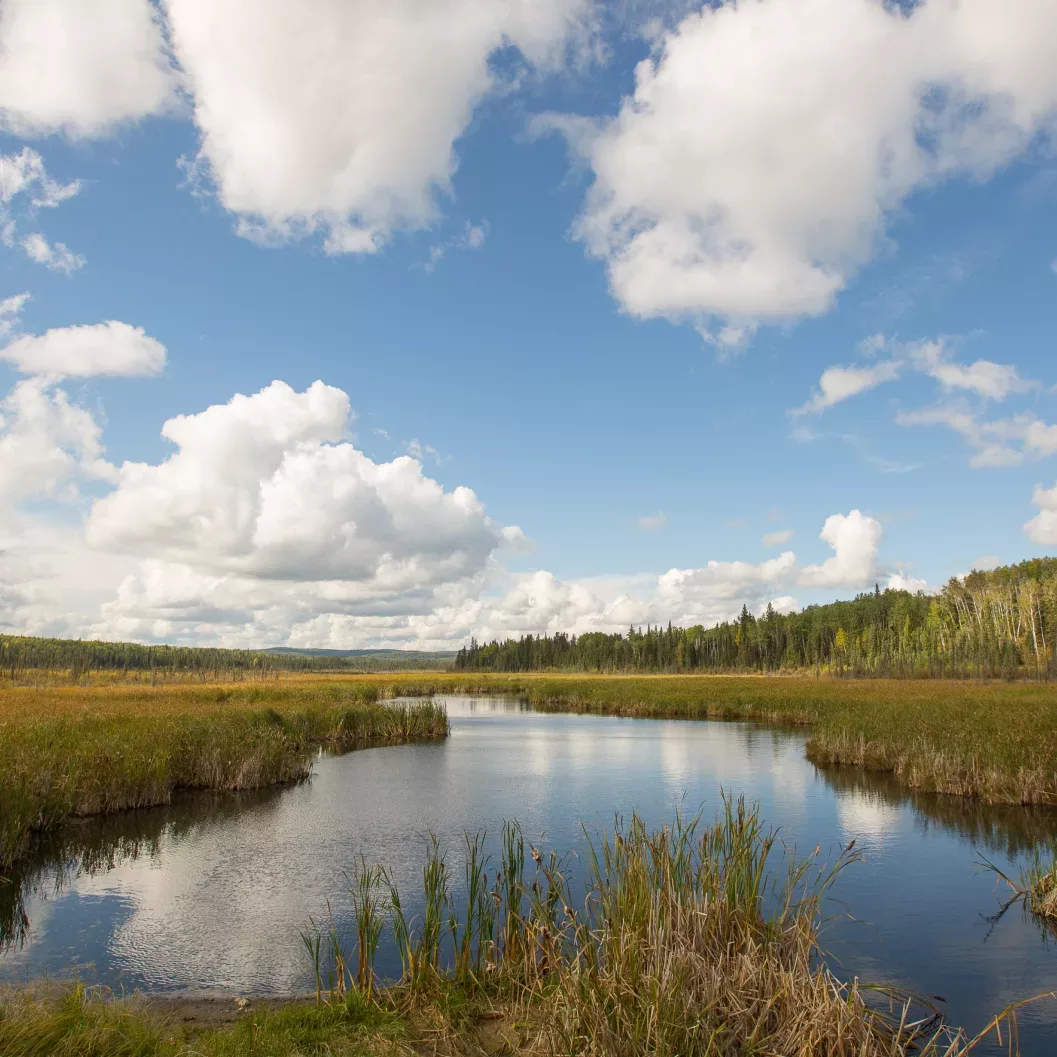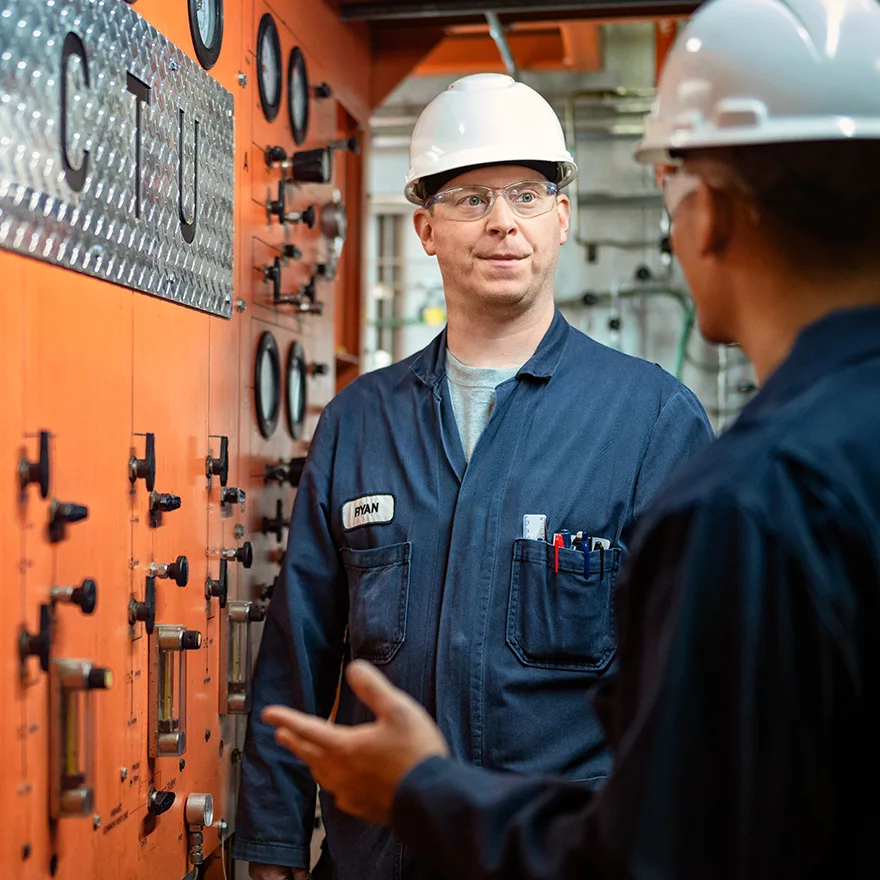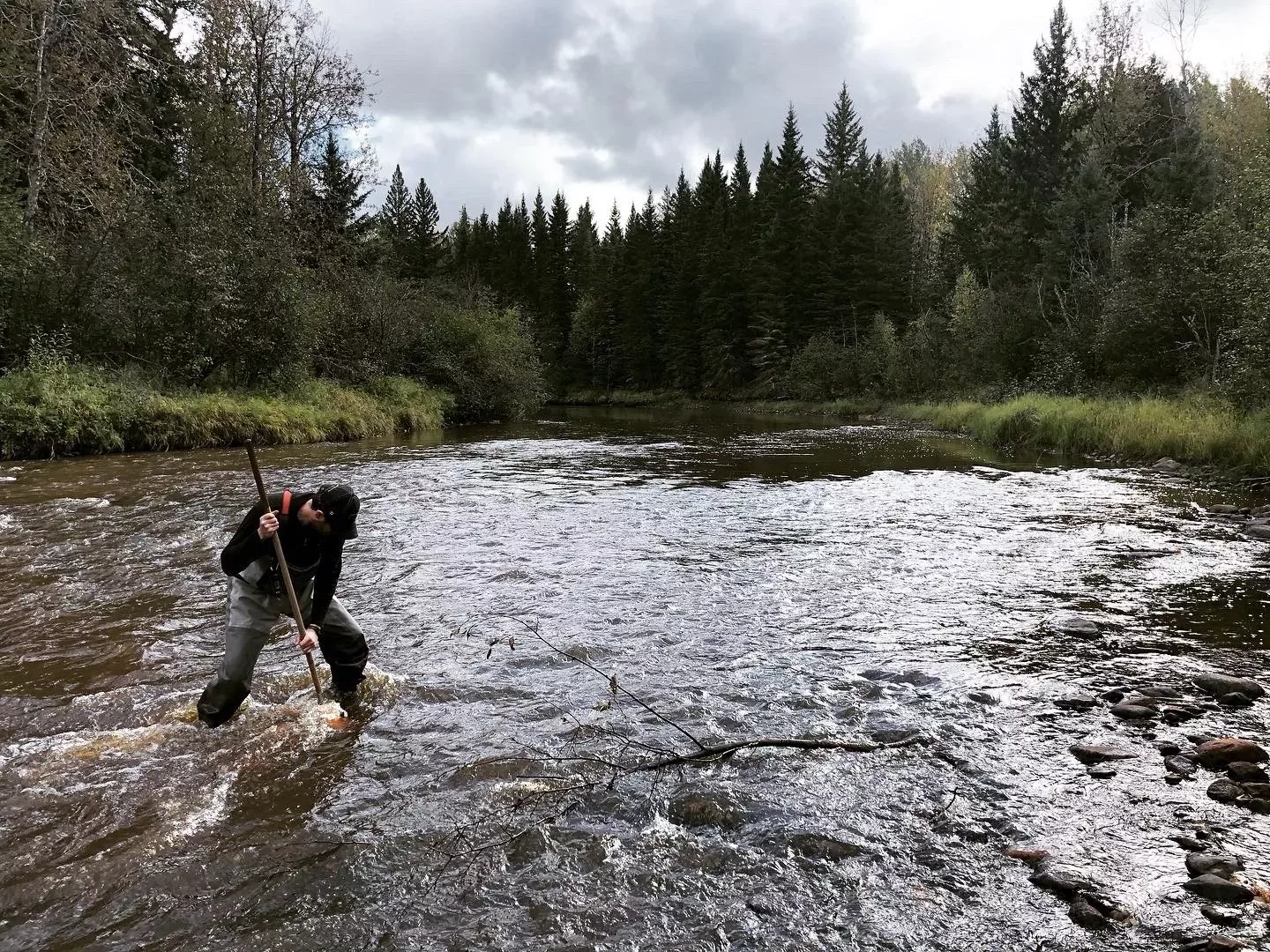About the oil sands
Discover what makes Alberta’s oil sands different.
Alberta has three primary deposit areas:
- Peace River
- Athabasca
- Cold Lake

People have known about Alberta’s oil sands for hundreds of years—long before these lands were known as Alberta. The First Nations mixed the heavy oil known as bitumen with spruce gum to waterproof their canoes.
Commercial development of the Alberta oil sands didn’t begin until 1967. That’s largely because the qualities that made bitumen ideal for waterproofing canoes—it’s thick and viscous—make it difficult to get out of the ground.
The facts on bitumen
Alberta has 10% of the world’s oil reserves, mostly bitumen. The low-grade crude oil is so thick that it’s almost solid at room temperature (think cold molasses.) To further complicate matters, bitumen occurs naturally in a mixture of sand, clay or other minerals and water. Together, this means that traditional drilling techniques can’t be used to extract bitumen.
The 20th century saw much research into ways to recover bitumen. A breakthrough came in 1929 when Dr. Karl Clark of the University of Alberta received a patent for a separation method using hot water and chemical agents.

The sand, water and clay left from mining operations get deposited in temporary storage ponds. These tailings ponds allow us to recover up to 90% of the process water and reuse it in operations.
Getting bitumen out of the ground
Clark’s innovation formed the basis for steam-assisted gravity drainage (SAGD), the technology used for in situ (in-place) extraction. This is a crucial technology because about 80% of the oil sands are deep underground. These bitumen deposits are extracted using a steam process and two wells. Steam is injected into the first well, heating the underground reservoir so that the bitumen becomes less thick and flows to the second well and is pumped to the surface for processing.
Oil sands can also be mined when the deposits are closer to the surface. This is the case in about 3% of Alberta’s oil sands. Mining operations use hydraulic and electric shovels to dig the ore out of the ground. It’s then transported in large haul trucks to a crusher. Once the ore has been reduced to smaller pieces, hot water is used to separate the bitumen from the sand, clay and water. Finally, the bitumen is sent to a treatment plant for processing.
Minimizing impacts
The sand, water and clay left from mining operations get deposited in temporary storage ponds. These tailings ponds allow us to recover up to 90% of the process water and reuse it in operations. Once the sand and clay settle in the ponds, they’re stored and used when the land is ready to be reclaimed.
That reclamation also happens at in situ sites. (By law, oil sands producers are required to return land to equivalent or greater capability once operations cease.) By minimizing land use and reclaiming disturbed land, the industry lessens its impact. Since 1967, the total amount of boreal forest disturbed by oil sands mining is just 0.2% of Canada’s boreal forest. The current active mining footprint is about 1,030 square kilometres, an area slightly larger than the City of Calgary.
Related news

Our people, their stories
Passionate, dedicated people are behind every innovation and every step forward.

